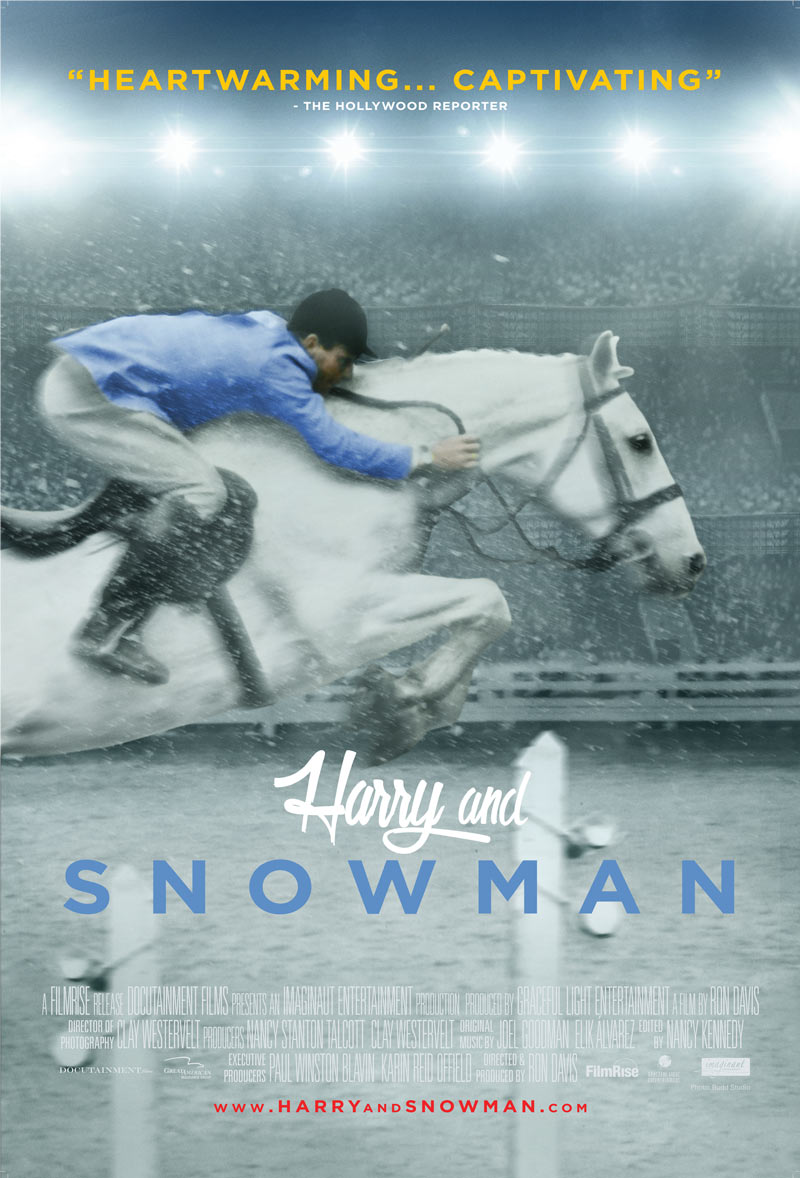 Harryandsnowman.com
Harryandsnowman.comHarry and Snowman opens in select theatres September 30. Find yours here.
THE STORY
Dutch immigrant, Harry deLeyer, journeyed to the United States after World War II and developed a transformative relationship with a broken down Amish plow horse he rescued off a slaughter truck bound for the glue factory. Harry paid eighty dollars for the horse and named him Snowman. In less than two years, Harry & Snowman went on to win the triple crown of show jumping, beating the nations blue bloods. They were famous for their day and traveled around the world together. Their chance meeting at a Pennsylvania horse auction saved them both and crafted a friendship that lasted a lifetime. Eighty-six year old Harry tells their Cinderella love story firsthand, as he continues to train on today's show jumping circuit.
Harry deLeyer
Harry deLeyer grew up working on his family farm in Holland. After World War II, Harry and his wife immigrated to the United States where he was offered a job as a riding instructor at the exclusive Knox School in Long Island New York.
Harry's career was catapulted by Snowman and he went on to become one of the most successful riders and trainers in America. He represented the United States at the World Championships in Sweden in 1983 and was recognized by the United States Equestrian Foundation with a Pegasus Medal of Honor in 2002 for his lifetime contribution to the sport.
Now 85, the "Galloping Grandfather," as he is known around the world, still rides and trains, based out of his farm in Virginia.
Snowman
Less than two years out of the Amish plow fields, Snowman won the 1958 horse show jumping Triple Crown — the American Horse Shows Association Horse of the Year, Professional Horseman's Association Champion and Champion of Madison Square Garden's Diamond Jubilee.
Snowman appeared on the most popular game show of the 1960's, "To Tell the Truth" and on "Who Do You Trust" with Johnny Carson. He had his own fan club, he was profiled twice in Life magazine and was the subject of three best-selling books, including the 2011 NY Times Best-Seller, The Eighty-Dollar Champion.
Snowman retired from competition in 1962 to Harry's farm in Long Island where he lived until he died in 1974. He was inducted into the Show Jumping Hall of Fame in 1992.
